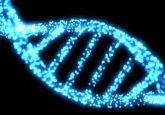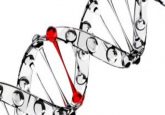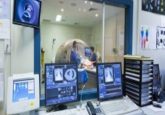Novel molecular classification system could lead to the reclassification of 10% of tumors
A paper published recently in Cell reports a new tumor classification system based on molecular subtypes, which could result in the reclassification of one in ten cancer patients.
The classification of cancers is currently conducted according to the tissue-of-origin system, on the basis of where in the body the disease originates, for example mouth or lung cancer. This study was organized as part of the Pan-Cancer Initiative of the Cancer Genome Atlas project, whose scientists posited that this reclassification could lead to the availability of different therapeutic options for patients.
The study involved a large team of researchers from multiple institutions, who carried out the most comprehensive analysis of a collection of tumors by systematic genomic methods to date, utilizing molecular data from thousands of patients representing 12 tumor types. Six different methods of molecular analysis, or ‘platforms’, were used to characterize the tumor types, mainly genomic platforms such as DNA and RNA analysis.
Data from these platforms were then analyzed individually and together in an integrated cross-platform analysis developed by co-first author Katherine Hoadley (University of North Carolina, NC, USA). These analyses converged on the same divisions of the tumors into 11 major subtypes or ‘clusters’. Five of these subtypes aligned with their tissue-of-origin analogues. However, importantly, some tissue-of-origin categories divide into multiple molecular subtypes, while some subtypes subsume several different tissue-of-origin categories.
Bladder cancer was one such group. The disease split into seven different subtypes, three of which were identified as the most commonly occurring. These subtypes included: bladder cancer only, bladder cancers clustered with lung adenocarcinomas and others with the subtype ‘squamous-like’, which include some lung cancers, head and neck cancers and some bladder cancers.
The importance of these findings was highlighted by senior author Josh Stuart, a professor of biomolecular engineering at the University of California Santa Cruz (CA, USA). “If you look at survival rates, the bladder cancers that clustered with other tumor types had a worse prognosis. So this is not just an academic exercise.”
The team suggested that the subtypes identified through their molecular analysis may reflect the cellular origin of the tumor. Evidence for this hypothesis comes from data demonstrating differences between cancers of epithelial and non-epithelial origins.
“We think the subtypes reflect primarily the cell of origin. Another factor is the nature of the genomic lesion, and third is the microenvironment of the cell and how surrounding cells influence it,” Stuart commented. “We are disentangling the signals from these different factors so we can gauge each one for its prognostic power.
The fact that all six platforms consistently identified the same set of subtypes, through both multiplatform and separate analyses, is another result that should not be overlooked. Apart from instilling confidence in the subtypes identified in this study, it means different types of data can be used to identify tumors.
As Stuart notes, “We can now say what the telltale signatures of the subtypes are, so you can classify a patient’s tumor just based on the gene expression data, or just based on mutation data, if that’s what you have. Having a molecular map like this could help get a patient into the right clinical trial.”
According to coauthor Christopher Benz, an oncologist at the Buck Institute for Research on Aging and the University of California San Francisco (CA, USA), the observed reclassification rate of 10 percent is likely to be an underestimate resulting from the unequal representation of cancer types. “If our study had included as many bladder cancers as breast cancers, for example, we would have reclassified 30 percent,” Benz explained.
This analysis lays a solid foundation for further studies to validate the findings. Stuart maintains that as more samples and cancer types are included in the analysis, the reclassification rate based on molecular signature is set to increase. Plans are already in place for a new Pan-Cancer analysis to include 21 cancer types.




